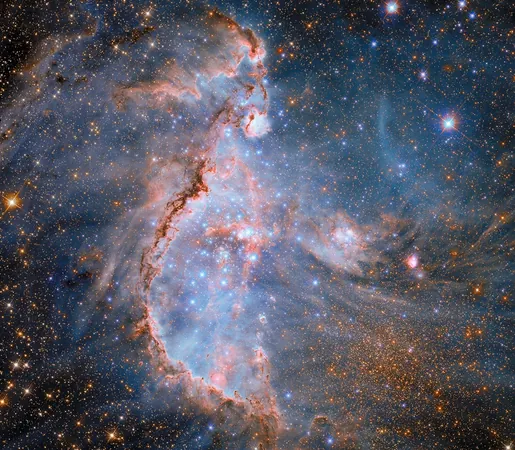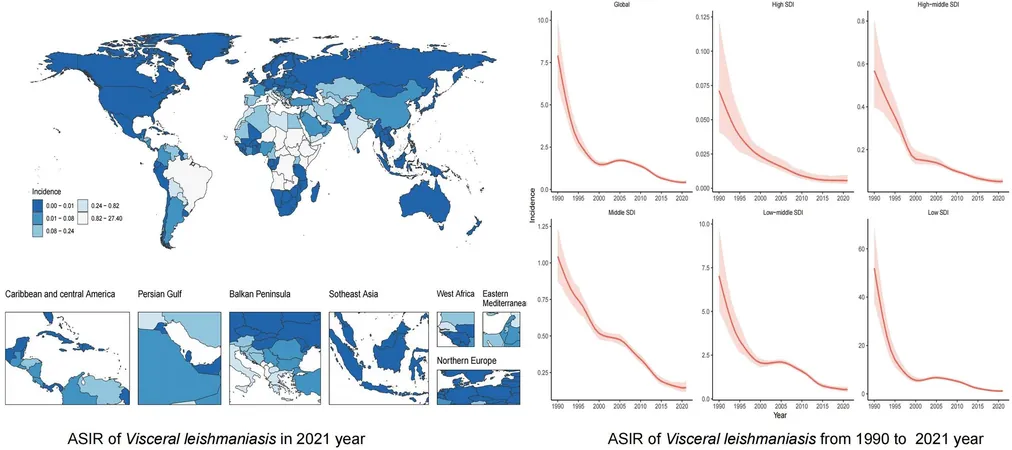
Hubble Captures Cosmic Sculptors in Action Within Nearby Galaxy
2025-04-14
Author: Ming
A Stunning New View of NGC 346
On April 4, 2025, astronomers unveiled a breathtaking image of the young star cluster NGC 346, revealing a dazzling new perspective. Though the James Webb Space Telescope and Hubble have previously explored this area, this latest imagery is groundbreaking. For the first time, it fuses Hubble's infrared, optical, and ultraviolet observations into a spectacularly detailed portrait of this vibrant star-forming region.
Journey to the Small Magellanic Cloud
Located in the Small Magellanic Cloud—a satellite galaxy of our Milky Way—NGC 346 is situated a staggering 200,000 light-years away in the constellation Tucana. This peculiar galaxy is intriguing because it contains lower levels of heavier elements, known as metals, compared to our own Milky Way. This unique composition mirrors conditions that were prevalent during the early universe, making it a key area for astronomical studies.
Home to 2,500 Newborn Stars
Within NGC 346 lies a bustling nursery of over 2,500 newborn stars. The most massive of these stellar bodies shine with an electric blue hue, commanding attention in the image. Surrounding them, a glowing pink nebula and serpentine dark clouds are visibly sculpted by the intense light from these young stars, creating a stunning cosmic landscape.
Unveiling the Secrets of Star Formation
Hubble's incredible sensitivity and resolution were pivotal in unraveling the mysteries of star formation in NGC 346. Through two observational sets taken 11 years apart, researchers discovered that the stars in the cluster are in a spiraling motion towards the center, driven by an influx of gas from beyond the cluster. This gas stream acts as a fuel source for the continuous stellar birth occurring in the heart of this turbulent cloud.
The Stellar Sculptors at Work
The stars of NGC 346 are not just shining brightly; they are also cosmic sculptors, actively shaping their environment. The intense radiation and powerful stellar winds generated by these massive stars bombard the surrounding gas of their birthplace, effectively carving out a bubble within the nebula. This interaction creates an ever-evolving backdrop that highlights the dynamic nature of star formation.

 Brasil (PT)
Brasil (PT)
 Canada (EN)
Canada (EN)
 Chile (ES)
Chile (ES)
 Česko (CS)
Česko (CS)
 대한민국 (KO)
대한민국 (KO)
 España (ES)
España (ES)
 France (FR)
France (FR)
 Hong Kong (EN)
Hong Kong (EN)
 Italia (IT)
Italia (IT)
 日本 (JA)
日本 (JA)
 Magyarország (HU)
Magyarország (HU)
 Norge (NO)
Norge (NO)
 Polska (PL)
Polska (PL)
 Schweiz (DE)
Schweiz (DE)
 Singapore (EN)
Singapore (EN)
 Sverige (SV)
Sverige (SV)
 Suomi (FI)
Suomi (FI)
 Türkiye (TR)
Türkiye (TR)
 الإمارات العربية المتحدة (AR)
الإمارات العربية المتحدة (AR)